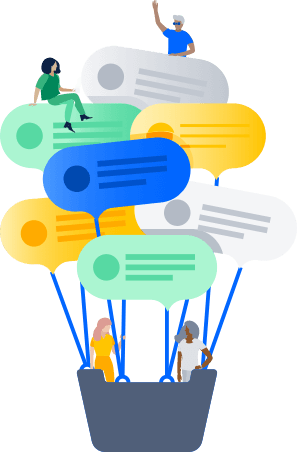Community resources
Community resources
Community resources
- Community
- Products
- Jira Service Management
- Questions
- Newbie having trouble with organization
Newbie having trouble with organization

Is there a concise description and illustration or example somewhere of the difference between issues, issue types and sub types, request types, portal groups, and fields? I am lost, keep going round and round with the nested documentation pages. Want to understand the structure and logic of how a project is set up. Our need is different than standard help desk.
2 answers
Hi @Leigh Brooks and welcome,
Apart from portal groups, the relationship among the other elements you state can be summarized in the following picture:
(https://confluence.atlassian.com/adminjiraserver/project-screens-schemes-and-fields-938847220.html)
I would suggest that you visit Atlassian University and start watching some basic courses about Jira (https://university.atlassian.com/). But to answer your question in few words:
Three types of "Jira":
- Jira software
- Jira Service Management
- Jira Core
Jira software
- A Jira software Project contains issues
- Issues contains fields
- Fields are populated by users
Jira Service Management
- A jira has one portal
- You may have many service management projects
- A JSM project contains issues/tickets
- These tickets are grouped by request types
- One or many request types are associated with only one issue type
- Issue types contains fields
- Fields are populated by customers or users
Hope that helps.
Alex
Project - this is a container for the issues that you need to manage. In development these are often times Products in business it can often be a project that has a beginning in the end. Each project can have its own set of behaviors and workflows schemes permissions and notifications. All of which help define how your team gets work done.
Issues - these are the things that need to get done. they belong to projects.
Issue types - allow you to define different behaviors for your issues. Typical issue types might be stories, Tasks, subtasks. Having different issue types allow you to define different workflows for different issues. For example, you might want to have a complex workflow for your stories and a simplified workflow for tasks.
Request types - these are categories you need to JSM. They allow you to percent more common language to your customers rather than often cryptic issue types. A request type is always associated to an issue type. As an example you might have an issue type called Task but you might have many request types associated to that issue type such as: phone issue, printer issue, access request, etc.
Portal Groups - these are simply containers for "like" request types. They are intended Group your request types in a manner that will the intuitive to your customers. As a gross example consider that you create a project for your entire organization you might have groups like: IT, HR, Facilities, Operations, etc.
Fields - these are attributes that help define or qualify your issues. Examples: priority, summary, description, assignee, reporter, and any number of custom fields that you feel are important.
As you had mentioned there is a lot of documentation out there on the Atlassian site and I encourage you to leverage this for a better and more complete understanding.
You must be a registered user to add a comment. If you've already registered, sign in. Otherwise, register and sign in.


You must be a registered user to add a comment. If you've already registered, sign in. Otherwise, register and sign in.